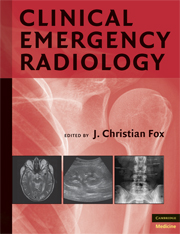
- Cited by 3
-
Cited byCrossref Citations
This Book has been cited by the following publications. This list is generated based on data provided by Crossref.
Abo, Alyssa 2014. Pediatric Emergency Critical Care and Ultrasound. p. 4.
Kharat, AmitT and Shah, AkshayAjit 2015. Role of high resolution ultrasound in evaluation of soft tissue foreign bodies. Medical Journal of Dr. D.Y. Patil University, Vol. 8, Issue. 5, p. 582.
Foroozan, Foroohar Yousefi, Rozhin Sadeghi, Parastoo and Kolios, Michael C. 2017. Structurally random Fourier domain compressive sampling and frequency domain beamforming for ultrasound imaging. p. 2111.
- Publisher:
- Cambridge University Press
- Online publication date:
- December 2009
- Print publication year:
- 2008
- Online ISBN:
- 9780511551734
- Subjects:
- Medical Imaging, Emergency Medicine, Medicine


